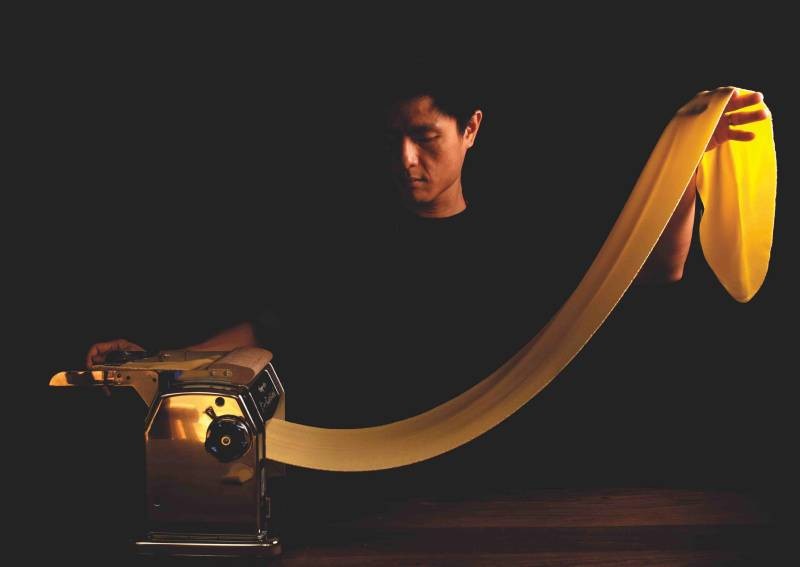Chef Lee Yum Hwa shines spotlight on authentic, age-old pasta recipes at Forma


“There will not be creative versions [of pasta] on the opening menu,” says chef Lee Yum Hwa. At upscale trattoria Forma, the sfoglina, or pasta maker has decided to shine the spotlight on authentic, age-old recipes and lesser-seen finds from North to South, and from the islands of Italy.
Lee is arguably one of the most sought-after pasta makers in Singapore. At his private dining outfit Ben Fatto 95, people join a sometimes year-long waitlist for a chance to slurp up his home-made — and handmade — creations.
Forma offers a simpler way to sample Lee’s cooking. The dining destination along Tembeling Road was opened in partnership with The Cicheti Group, and represents a shared belief that anyone can claim to represent Italian cooking.
“I think there is still a bias that a cuisine is better only if it is made by its own people,” says Lee. Both outfits are home-grown, largely locally-led, and excel at cooking Italian food. “It mirrors my belief,” he adds.

More importantly, Forma provides Lee with a larger platform on which to showcase his expertise. “My goal has always been to produce pasta that has some scalability,” he says. While he is used to running a home kitchen solo, extra hands in a commercial kitchen allow for processes to be streamlined.
“With the cooking part out of my hands, I can dedicate more time to making pasta.” The extra time is especially useful given that Forma focuses on “embracing old traditions”.
To prepare the debut menu, Lee studied various pasta shapes and regional dishes, diving into culinary anthropology. “Having a broader appreciation of this [information] provides me with the impetus and inspiration to produce the shape wholeheartedly — and with meaning,” he enthuses.

Tortellini, for example, is a meticulous, highly guarded dish. Lee says the process is “uncompromising”— and that many outside of Bologna would not be able to prepare it. Usually, he says, it becomes something completely different. Forma follows tradition, with the tiny filled pasta parcels served in brodo, a soothing, clear broth. “I take great pride in our efforts to showcase a version that is as authentic as possible.”
However, Forma is more than just a pasta paradise. It aims to provide a multi-course introduction to the hearty flavours of Italy. An almost transportive experience extends beyond the plate to the wine glasses and the four walls.
The trattoria’s focal point is its pasta-making kitchen, in which virtually everything about the cooking process is on display. It is the first thing that greets customers entering Forma. Interior design studio Takenouch Webb echoed the menu and craftsmanship with handmade tiles, terracotta flooring, and rattan-lined furniture.

To lend an air of rustic, sculptural charm to the back of the shophouse space, an old concrete staircase was preserved.
As an additional invitation into Italian culture, the wine programme has been curated to reflect all 20 wine regions of the country, from familiar varietals to native finds like Cesanese from Lazio and Schioppettino from Friuli.
[[nid:577675]]
Likewise, the food is representative of Italy’s many regions. The menu features eight antipasti, five secondi, and four dolci — a conservative number, according to group head chef Dylan Cheong (formerly of three-Michelin- star Osteria Francesca) with each prepared to be “a standout dish”.
Using seasonal ingredients, options may include dry-aged cuts of beef, fresh seafood, or Rosa Di Gorizia, a tender, magenta-hued radicchio used in a salad of provolone, onion, and honey rosemary dressing, from the Venetian terroir.
“While the customers are likely to come for the pasta, they will leave amazed by the full Italian feast they didn’t realise they had,” says Cheong.
This article was first published in The Peak.